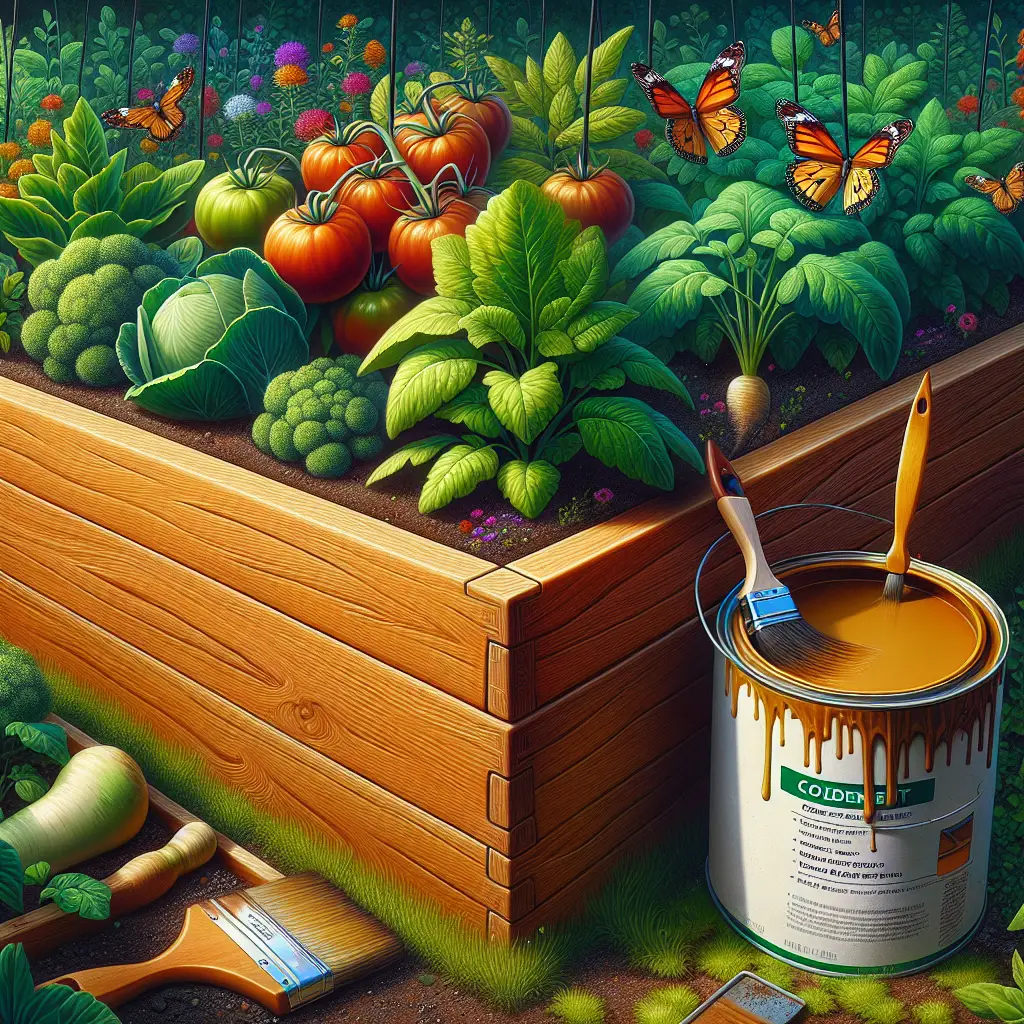What Can I Seal My Raised Garden Bed With?
If you’re a dedicated gardener, you understand the importance of maintaining a robust raised garden bed. However, the protection and longevity of these beds often hinge on a crucial step – sealing. Sealing your raised garden bed not only prolongs its life but also ensures that it remains a sanctuary for your plants. In this blog post, we delve into the most effective methods to seal your raised garden bed and keep it thriving for seasons to come.
1. Choosing the Right Material
Before you start slathering any sealant on your raised bed, it’s critical to pick materials that are durable and safe for plant life. Cedar and redwood are commonly used for building garden beds because they are naturally rot-resistant. However, even these sturdy woods benefit from added protection.
For those using less rot-resistant wood like pine, sealing becomes even more essential. Be sure to avoid woods treated with harmful chemicals that could leach into your soil and plants.
2. Safe Sealant Options
When selecting a sealant, look for products designed for use in gardens or around edible plants. Here are some to consider:
- Linseed Oil: This natural option, derived from flaxseed, enhances wood’s durability against moisture. Raw linseed oil is ideal as it’s free from added chemicals, unlike boiled linseed oil which often contains toxic solvents.
-
Tung Oil: Another plant-based option, tung oil is extracted from the seeds of the tung tree and provides a strong water-resistant seal. Use pure tung oil or products with a safe tung oil base.
-
Mineral Oil: An inert and non-toxic oil that provides wood with a light, water-resistant coating. Food-grade mineral oil is a safe choice and is widely used on wooden kitchen utensils.
-
Sealants for Raised Beds: There are sealants specifically formulated for raised garden beds that are safe for edible plants. Garden-Seal is one such product, known for its eco-friendly ingredients and effectiveness.
Always read the label on any product you’re considering to ensure it’s safe for use in your garden.
3. Application Tips for Sealants
Applying sealant can be a straightforward process if you follow these tips:
- Prepare the Surface: Clean the wood and let it dry completely. Sanding the wood beforehand ensures better adhesion for the sealant.
-
Apply Evenly: Use a brush or sprayer for an even application. Start from the inside walls to avoid contact with soil and plants as much as possible.
-
Reapply as Needed: Over time, the effectiveness of sealant wanes. Plan to reapply every couple of years or as the manufacturer recommends.
-
Timing: Ideally, seal your garden bed before filling it with soil or between growing seasons to avoid plant exposure to any fumes.
4. DIY Sealants
For those who prefer a more hands-on approach, DIYing your sealant can be rewarding. A popular concoction involves a mixture of beeswax and linseed oil, melted and applied hot. Make sure to source your beeswax from reputable apiaries to guarantee purity.
5. Consider Alternative Methods
Apart from conventional sealing methods, consider innovative approaches such as:
- Plastic Lining: A heavy-duty plastic liner can act as a barrier between wood and soil, blocking moisture effectively. However, ensure proper drainage to prevent water logging.
-
Metal Hardware: Galvanized or stainless steel corner brackets and supports can protect wooden corners from decay and enhance structural integrity.
6. Sealing for Sustainability and Style
While practicality is key, aesthetics are also essential for backyard gardeners. Charming wood finishes not only safeguard your garden bed but can also beautify your outdoor space. The warmth of a well-maintained garden bed provides an inviting habitat for your plants as well as a delight for the eyes.
7. Environmental Considerations
It’s essential to consider the environmental impact of sealing your garden bed. Look for sealants with low volatile organic compound (VOC) content or those certified by eco-friendly organizations. Sealing wisely contributes to both the health of your garden and the planet.
Conclusion
Securing the longevity of your raised garden bed is an investment in future harvests and the serenity of your green space. Utilize the advice outlined above, remembering to prioritize both the health of your garden and the environment. With the appropriate selection and application of a sealant, you can look forward to an enduring and bountiful garden bed.
For additional insights and gardening essentials, check out other articles on gardening best practices. Your green thumb deserves the best tools and knowledge to flourish.
Please note that links to products in this article are for reference and based on personal experience or research; however, always conduct your due diligence before making a purchase.
Happy gardening, and may your raised beds thrive with life and abundance!


